
Chronic Absence Table of Contents
PLEASE NOTE: This page is under construction and may experience changes
| 1. The Problem |
2. Addressing the Problem |
| 3. Utah Law, District Policies, Procedures & Codes |
Defining the Terms of Absenteeism
Chronic absence measures lost learning time and has been defined as missing 10% or more of the total number of days enrolled in school per year for any reason– excused, unexcused, or out of school suspension. Being chronically absent impacts students negatively. Research shows these students tend to have difficulty reading on grade level by third grade, succeeding in middle school, and graduating from high school. Missing only two days a month can put a student at risk for being chronically absent.
What is the Difference Between Truancy & Chronic Absence?
Truancy only counts unexcused absences, emphasizes individual compliance with school rules and uses legal, usually more blaming and punitive solutions. Whereas chronic absence counts all absences, excused, unexcused, and suspensions. Chronic absence emphasizes the academic impact of days missed and the benefits of being present. Often preventative, problem solving and trauma-sensitive strategies are used to address chronic absence. Focusing on chronic absence can also cultivate family and student engagement.
Why Can't Schools Just Monitor Average Daily Attendance?
Average Daily Attendance is measured on a school level and shows the total hours all students attended school divided by the total hours all students could have attended the school year. Average daily attendance is measured on a school level versus a student level and tends to mask individual student chronic absence making it difficult to see when a school or district has an attendance issue. Average daily attendance is beneficial for identifying some issues with attendance, such as aggregate data at certain points of time such as half days, holidays and bad weather.

Who is Affected by Chronic Absence?
The "ripple effect" of chronic absence refers to the far-reaching, cascading consequences of a student frequently missing school, impacting not only their own academic performance but also disrupting the learning environment for classmates, straining teacher resources, and potentially leading to long-term negative outcomes like dropping out of school, ultimately affecting the entire community and workforce.
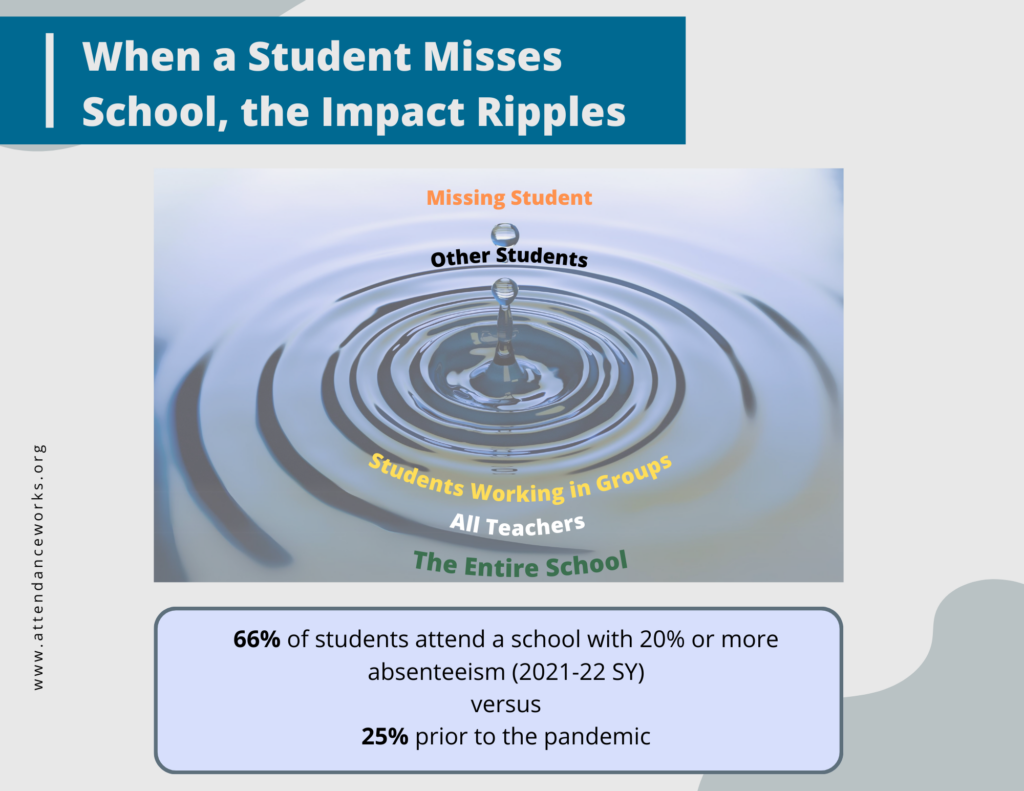
Addressing the Problem
How to Meet the Challenge of Chronic Absenteeism?
"Meeting the chronic absence challenge" is actively implementing strategies and interventions aimed at significantly reducing the rate of chronic absenteeism in schools, typically by addressing the root causes of students missing large portions of school days through a comprehensive approach that involves collaboration with families, community support, and early intervention methods.
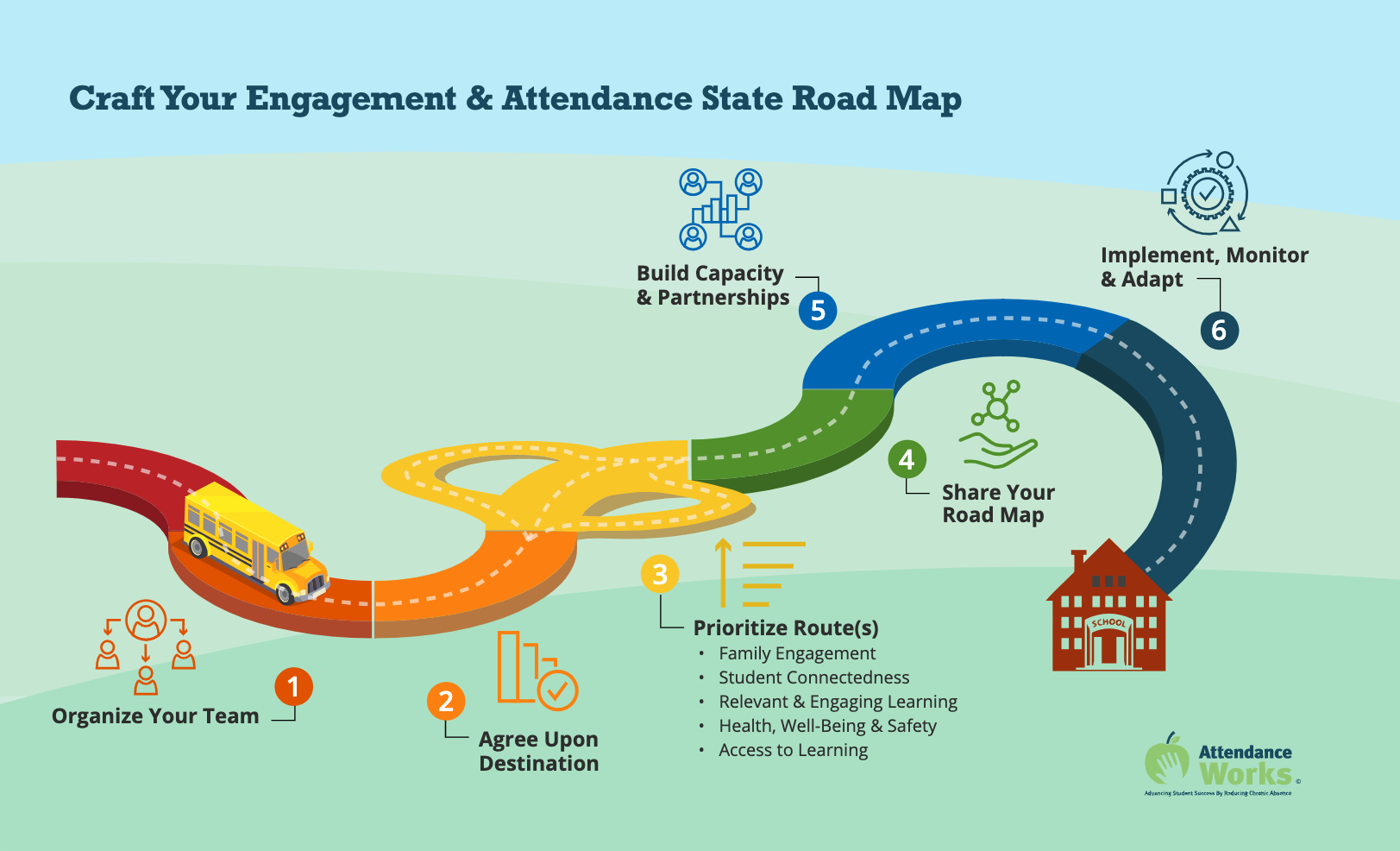
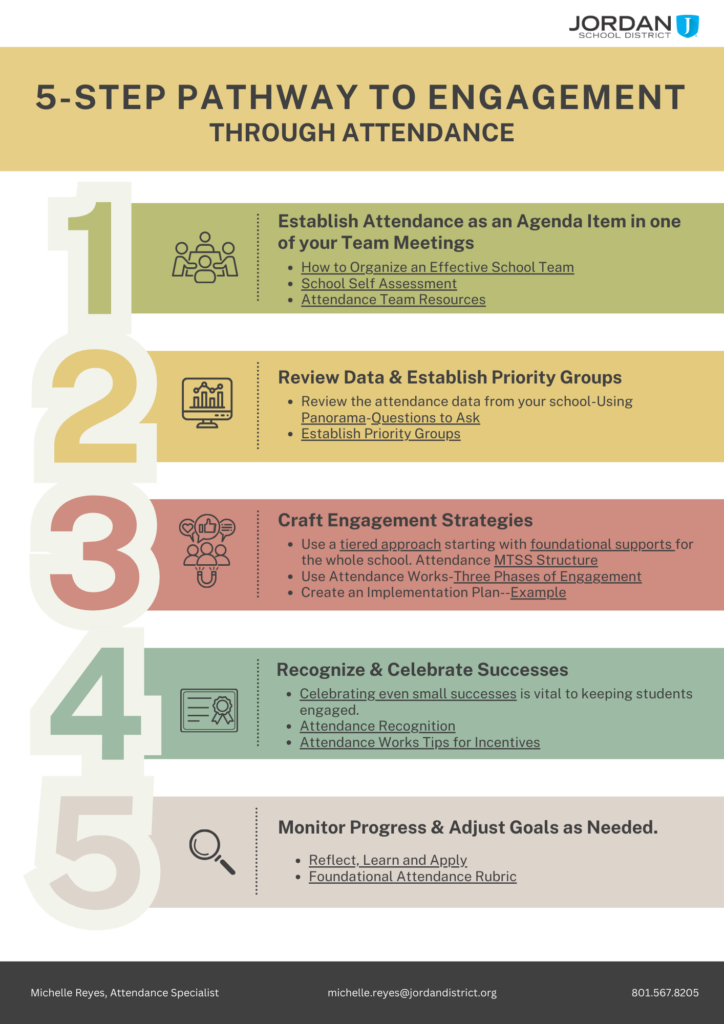
- Meeting the Chronic Absenteeism Challenge-Simple outline of steps to follow to meet the challenge of chronic absence. Know improvement is possible, know your challenge, organize your response and align your resources.
- Changing Mindset Problem Focused vs Partnership Focused-Here you will find a graphic outlining how changing the mindset from problem focused to partnership focused can increase family engagement and increase attendance.
- The More Students Miss Class, The Worse Teachers Feel About Their Jobs-EdWeek Research: New research suggests that chronic absence not only affects students, but also their teachers. This research article highlights how teachers feel chronic absence plays a role in their overall job satisfaction
- How to improve your school's response to chronic absenteeism-The Grad Partnership: The Grad Partnership has created an action planning tool to
- What 3 California Districts are Doing to Reduce Kindergarten Absenteeism-Attendance Achievers: Effective Strategies that Set Bright Spots Districts Apart
Tiered Approach to Chronic Absence
Research and experts assure taking a tiered approach to address chronic absence is the most effective. Successful plans start with foundational supports for the whole school, promoting positive learning conditions for all, and are followed by tiered prevention based supports for prevention (Tier 1), early intervention (Tier 2) and intense intervention (Tier 3).
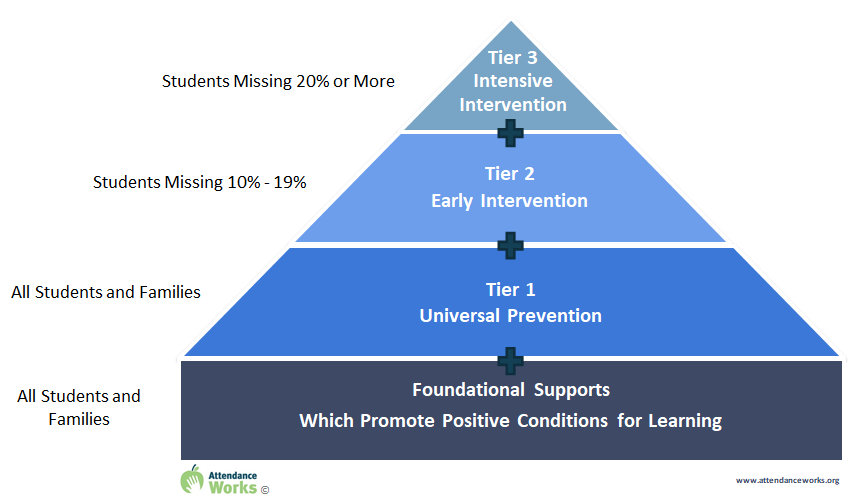

Success Stories-Using a Tiered Approach for Attendance
Problem Solving: Addressing Root Cause

Effective Practices:
- Engaging families and students in identifying root causes and solutions
- Early warning system, MTSS, and student success systems (Panorama)
- Success Coaches and mentors
District and School Actions:
- Forming strategic partnerships to provide student supports at the appropriate level (wrap around supports, mentors, tutors)
- Create or expand community schools
- Partner with city mayors to form interagency task force to improve transportation, housing, etc
Root Cause Analysis Resources
- Root Causes for Absenteeism-Four areas of root causes for attendance outlined here.
- Root Causes Worksheet-Attendance Works, Use this worksheet to help study the positive conditions for learning and identify possible causes of absenteeism.
- Attendance Problem Solving Reference-Lists 4 areas of attendance barriers along with possible actions, interventions and a response matrix.
- Anonymous Student Survey on Causes of Absenteeism-Sprick, J., & Berg, T. (2019). Teacher’s guide to tackling attendance challenges. ASCD. Also available as a downloadable PDF.
- Root Cause Analysis Resource Reference sheet-Includes a list of linked resources you can research to help with attendance root cause analysis.
- Mitigation: Recovering Learning & Social Connection Best Practices-The White House held an attendance summit in 2024 where they addressed chronic absenteeism and how to combat it. During the summit high impact, effective practices where shared that would ease chronic absence in schools. These practices are outlined here.
- Every Day Counts Summit 2024-White House Attendance Summit hosted to share effective practices surrounding chronic absence. Click the link to watch the summit.
Utah Legislation, Rules & Statutes
Utah’s legislation, rules, and statutes are continually being revisited and revised based on numerous factors. Staying current with what an LEA and school needs to adhere to can be challenging. These resources will help you to identify what is current. This will be updated as needed.
House Bills:
HB 362- HB0362 (utah.gov) Juvenile Justice Revisions
Summary:
-
- amends the definition of an evidence-based program for purposes of responses to school-based behavior;
- modifies the requirements for referring an offense that occurs when school is in session or during a school-sponsored activity;
- provides the requirements for referring a minor who is alleged of being a habitual truant;
- modifies provisions regarding reintegration plans for students who have committed a serious offense;
- requires a school employee to report an offense that is committed by a minor on school grounds when school is in session or at a school-sponsored activity;
HB 400- HB0400 (utah.gov) School Absenteeism Amendments
Summary:
- directs local education agencies to include certain evidence-based strategies for children as part of their efforts to reduce student absenteeism;
- enacts new duties for the State Board of Education with respect to addressing chronic absenteeism prevention and intervention;
- And amends the responsibilities of the Division of Juvenile Justice and Youth Services to require the use of evidence-informed and research-informed interventions.
HB 16- HB0016 (utah.gov) Block Grant Funding for Prevention Programs in Public Education
Summary:
- establishes block grant funding for the implementation of comprehensive prevention programs in local education agencies (LEAs);
- requires the State Board of Education (State Board) to:
- make rules to establish and administer the grant application process; and
- provide LEAs with certain resources and support;
- provides for the allowable uses of the block grant funding;
- allows LEAs to:
- choose to implement a comprehensive prevention plan with block grant funding or implement individual prevention plans with existing funding restrictions; and
- submit one comprehensive report instead of individually required reports if the LEA implements a comprehensive prevention plan;
- amends existing prevention programs to accommodate the opportunity for block grant funding;
HB 84- HB0084 (utah.gov) School Safety Amendments
Summary:
- requires certain state buildings and schools to have emergency communication systems;
- requires school resource officer training to be developed by the state security chief;
- establishes duties of the state security chief and a county security chief in relation to school safety initiatives;
- establishes a school guardian program;
- requires threat reporting by state employees and others if they become aware of threats to schools;
- establishes some reporting from the SafeUT Crisis Line to the state's intelligence databases;
- requires certain school safety data to be included in the annual school disciplinary report;
- expands requirements for school resource officer contracts and policies;
- requires a local education agency (LEA) to ensure that each school within the LEA conduct a school safety needs assessment;
- requires designation of certain school safety personnel;
- clarifies that a school may share certain information regarding an incident of bullying, cyber-bullying, hazing, abusive conduct, or retaliation with a parent upon request;
- requires a school to provide regular communication updates to a parent regarding the implementation of an action plan to address an incident of bullying, cyber-bullying, hazing, abusive conduct, or retaliation;
- requires an LEA to update the LEA's bullying, cyber-bullying, hazing, abusive conduct, and retaliation policy related to certain social media use of a student;
- requires an LEA to designate an individual for bullying incident response and outlines the individual's duties;
- requires panic alert devices and video camera access for schools and classrooms;
- requires coordination of emergency call information with the state's intelligence system;
- amends processes for secure firearm storage under certain circumstances to include school guardians; and
- makes technical changes.
HB 304- HB0304 (utah.gov) Juvenile Justice Revisions
Summary:
- Notice of Truancy starts on line 270
- Responses to School Based Behavior starts on line 311
Senate Bills:
SB 177- SB0177 (utah.gov) Absenteeism Prevention Amendments
Summary:
- allows a school age child's grade to include attendance under certain circumstances
State Statutes:
- 53G-6-202 Compulsory Education
- 53G-6-203 Truancy -- Notice of truancy -- Failure to cooperate with school authorities
- 53G-6-204 School-age children exempt from school attendance.
- 53G-6-205 Approval absences
- 53G-6-206 Duties of a local school board, charter school governing board, or school district in promoting regular attendance -- Parental involvement -- Liability not imposed -- Report to state board
- 53G-6-207 Truancy specialists
- 53G-6-208 Taking custody of a person believed to be a truant minor -- Disposition -- Reports -- Immunity from liability
- 53G-6-209 Truancy support centers
- 53G-6-210 Educational neglect of a minor -- Procedures -- Defenses
- 53G-6-211 Proceedings arising from failure to attend public school
- 53G-8-211 Responses to school-based behavior
- 53G-9-804 Duties of the State Board of Education (Dropout Prevention and Recovery and Remediation Programs)
Jordan School District Attendance Policy
- Board Directive
The Board of Education recognizes that regular student attendance at school facilitates academic achievement by maximizing the interaction between students and teachers. The Board also recognizes that regular student attendance at school is mandated by Utah Compulsory Attendance Law 53G-6-202, which requires students between the ages of six and 18 to attend school and is critical if schools are to meet the accountability standards set by federal and state legislation. The Board, therefore, delegates to the District and local school administration the responsibility to develop school policies and procedures that promote regular student attendance. The school’s responsibility is to encourage and help students develop positive attendance habits that will enhance opportunities for future success. - Administrative Policy
Frequent absences of students from the day-to-day classroom experiences disrupt the instructional process. The benefits of instruction, once lost, cannot be entirely regained. The process of education requires a continuity of instruction, class participation, learning experience, and study. Therefore, the local school will make every effort within the following administrative policy provisions, to encourage regular attendance for all students and to assist parents in their responsibility to have their children attend school regularly.
- Full Policy found here-Jordan District Attendance Policy
Jordan School District Attendance Procedure
Positive Promotion of Attendance Flowchart-Outlines steps to follow to address chronic absence for improvement.

Jordan School District Attendance Codes
All schools use the standard set of attendance codes recorded in Skyward and listed on the Attendance Code Reference Sheet.
Schools may choose to add additional reason codes if needed and approved by the building principal. Because Skyward only allows for reports to be run on absence types, creating large numbers of absences reasons does not provide much in terms of utility or benefit. Schools should use the comment field whenever possible to clarify the details of an absence instead of creating an additional reason code.
Absence codes count in Total Attendance/Truancy for the period in which they were entered in Skyward attendance.


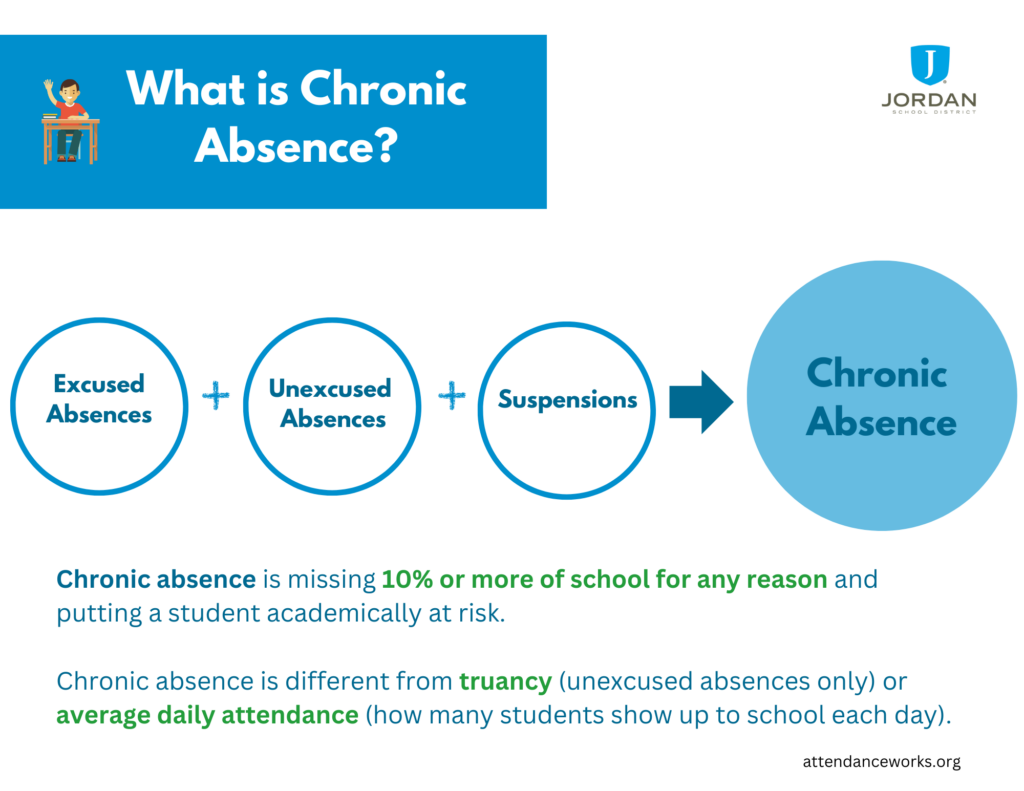 ↑Back to Top
↑Back to Top